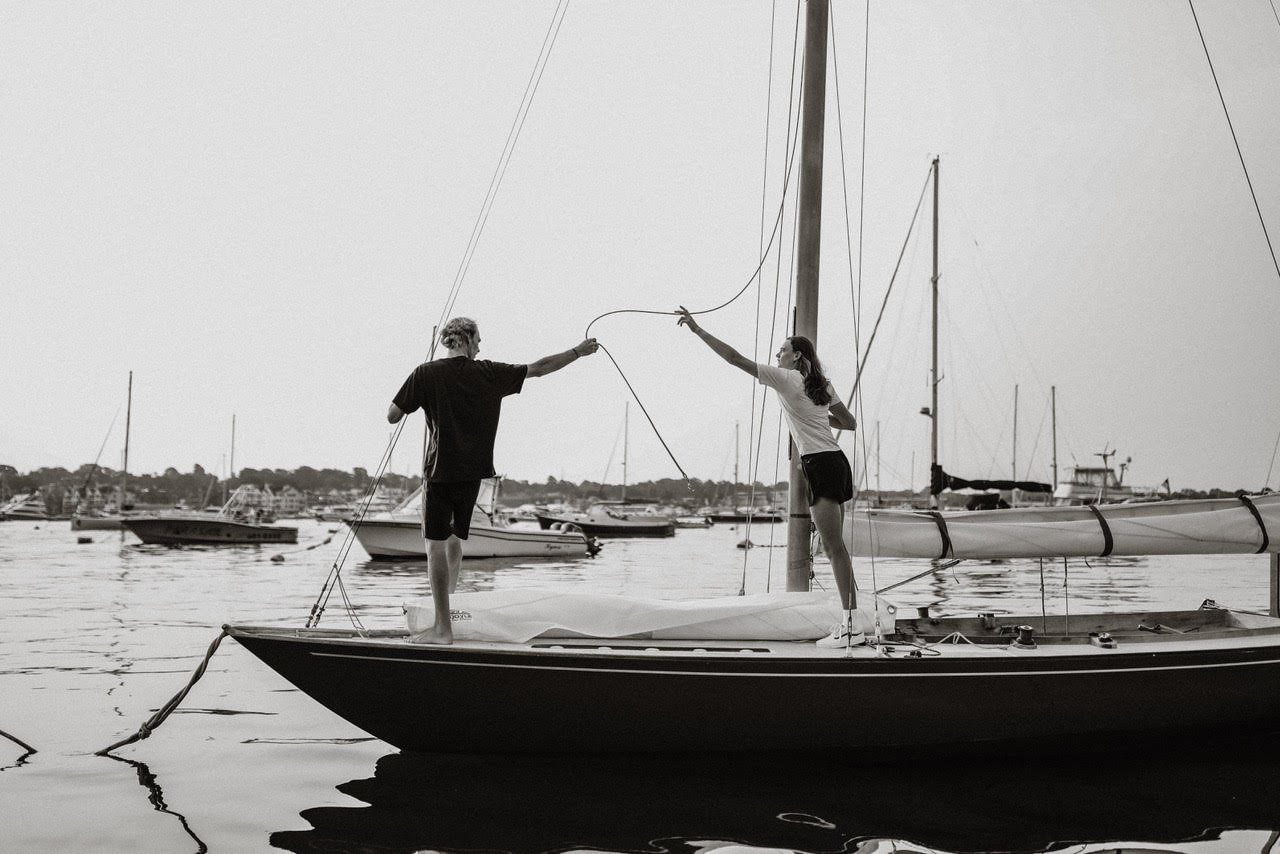
community
Água Viva: Key & Carina Becker
Brother and sister, and professional sailors, Key (27) and Carina Becker (26) grew up sailing in Rye NY, the home of The American Yacht Club. Built 1883, it’s distinguished by it’s long history of competitive racing, and leadership in development of the sport among women and junior sailors -- such as Key and Carina.
Key and Carina race TP52s, a class of “big boats”, in a number of the most preeminent race series around the world, such as the 52 Super Series and GL52 Series. These boats have large crews, and each sailors job is very specific. Winning requires teamwork, timing, and strategic decision-making. It’s very technical and high pressure racing.
In their downtime to decompress, Key and Carina enjoy other solo sailing pursuits, as do many sailors who race these big boats. For Key it’s Wing Foiling and Carina what’s called Moth Foiling. Both sports feature a hydrofoil design that lifts the boat or board out of the water. Wing Foiling is like windsurfing, except the sail is not attached to the board. Moth foils are a small and sleek solo sailboat, with a wing on both sides that gives it the appearance its name references.
For both, these solo sailing sports are a way to reconnect with their passion for sailing and love of the water without the high intensity teamwork and competition of their professional sailing jobs. These pursuits return them to the purity of the sport… as does a brother and sister outing on a beautiful Shield sailboat on a rare day they find themselves together in the same place in Newport, RI.
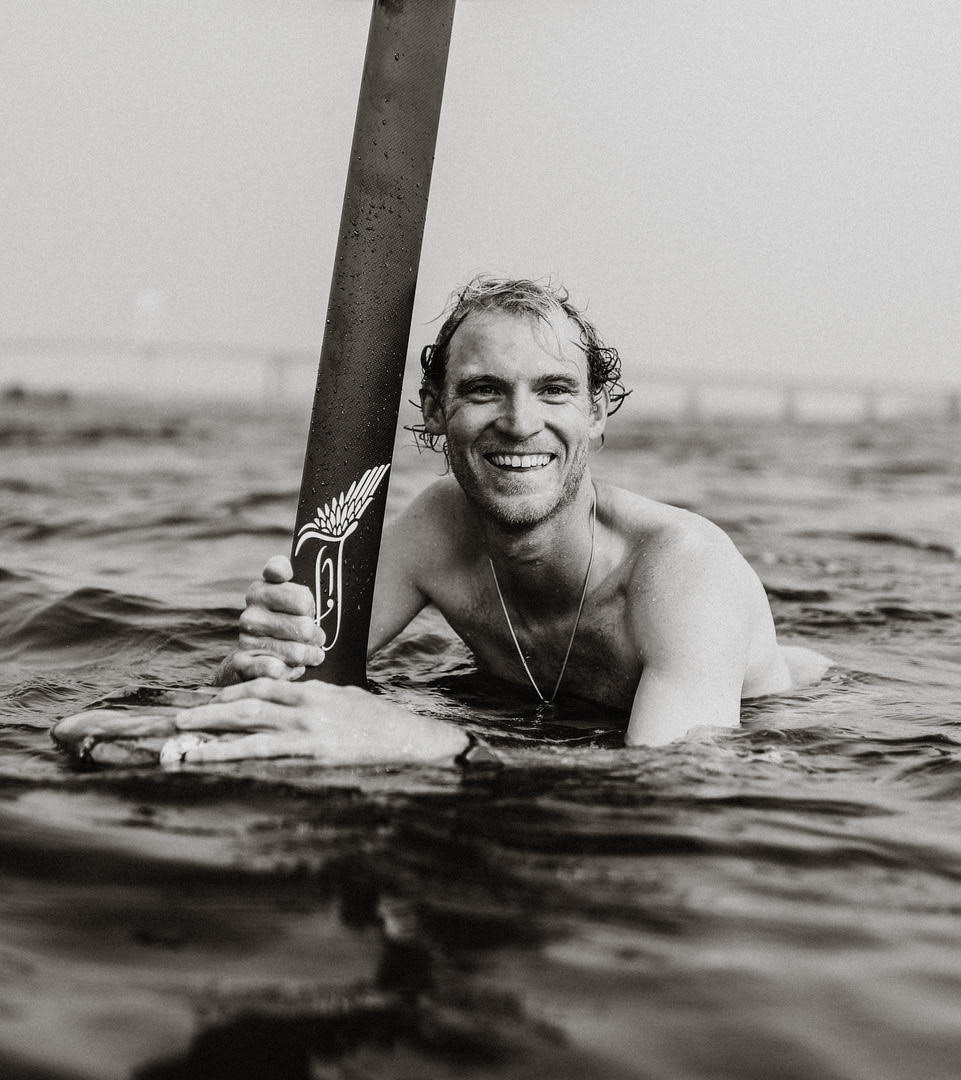
KEY
CL: How did you and Carina get your start as professional sailors?
KB: The simple answer is time. We both put in a lot of hours sailing and most importantly saying “yes” to every opportunity that we were fortunate to have come our way. Eventually the stars began to align and here we are.
CL: Tell us about these “big boats” you race.
KB: The type of boat is called the TP52, which stands for Transpac 52. The boats were originally designed in the 1990s-early 2000s for the Transpac race which goes from LA to Honolulu. The design of the boats has evolved over time into mostly inshore style grand prix race boats. The leading series now is called The 52 Super Series and is generally based in Europe.
CL: Tell us a little about the racing series in which you and Carina compete.
KB: We both compete in the GL52 series, which stands for Great Lakes 52. It was created a few years ago trying to mimic the Super Series. We mostly sail in Michigan in the summer between a few different locations, and then Florida in the winter.
CL: Are you on one team or do you go from boat to boat. How does that work?
KB: For the most part I’ve been with one team named Vesper. , which is owned by David Team from Newport Beach CA. I’ve been sailing with him for almost 4 years. This year the team is based in Europe for a few events. In June we sailed the Loro Piana Giraglia regatta in St. Tropez, and we just became ORC European Champions at the Copa Del Rey in Palma de Mallorca. But in the GL52 series this summer, I raced with Peter Askew and his team Wizard.
CL: What a life! Do you all have specific jobs on the boats?
KB: We all have positions, but it all comes down to working together. I’m what’s called a Mid-Bowman, sometimes the Bowman. Most of my job deals with getting the sails up and down and making sure everything is rigged correctly. A lot of little details make a big difference.
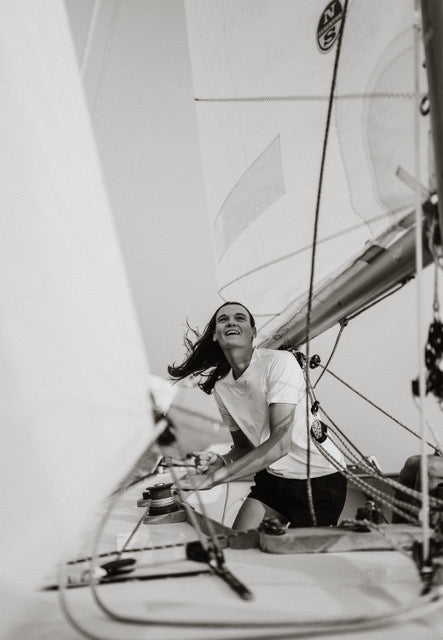
CL: What a life! Do you all have specific jobs on the boats?
KB: We all have positions, but it all comes down to working together. I’m what’s called a Mid-Bowman, sometimes the Bowman. Most of my job deals with getting the sails up and down and making sure everything is rigged correctly. A lot of little details make a big difference.
CL: These positions are all so specific and tactical. It’s so team focused. Are there solo sailing sports you do?
KB: Wing foiling is my go-to hobby. I wanted to be on the water in a way that reminded me why I chose this path, which is because I love it, and not get lost in the idea of sailing as a job. I’m very fortunate to live the life I do and Wing foiling is another way I get to experience the water.
CL: You had opportunities to get into sailing at a young age. Are there ways you try to give other young sailors the same opportunities?
KB: Carina and I were both lucky enough to benefit from the help of other’s generosity. The sport is very challenging for young people, and I try to do the most I can to get others those same opportunities. I think the biggest thing I try to do to make an impact is using my position and connections, as someone who does get to sail on these big boats, to help other young sailors. I feel like I’m asked almost every day to help find crew for other teams.
CL: Being in the water, in the sun and the wind it takes a toll on your skin and the body. As a young man, do you have any recovery or skin care routine?
KB: The biggest thing for me is obviously good sunscreen. Secondly, I try to keep my skin moisturized. I’ve got pretty fair skin that burns easily and sometimes sunscreen doesn't make it into my day. Costa Brazil’s lotion helps on the days when I forget step 1.
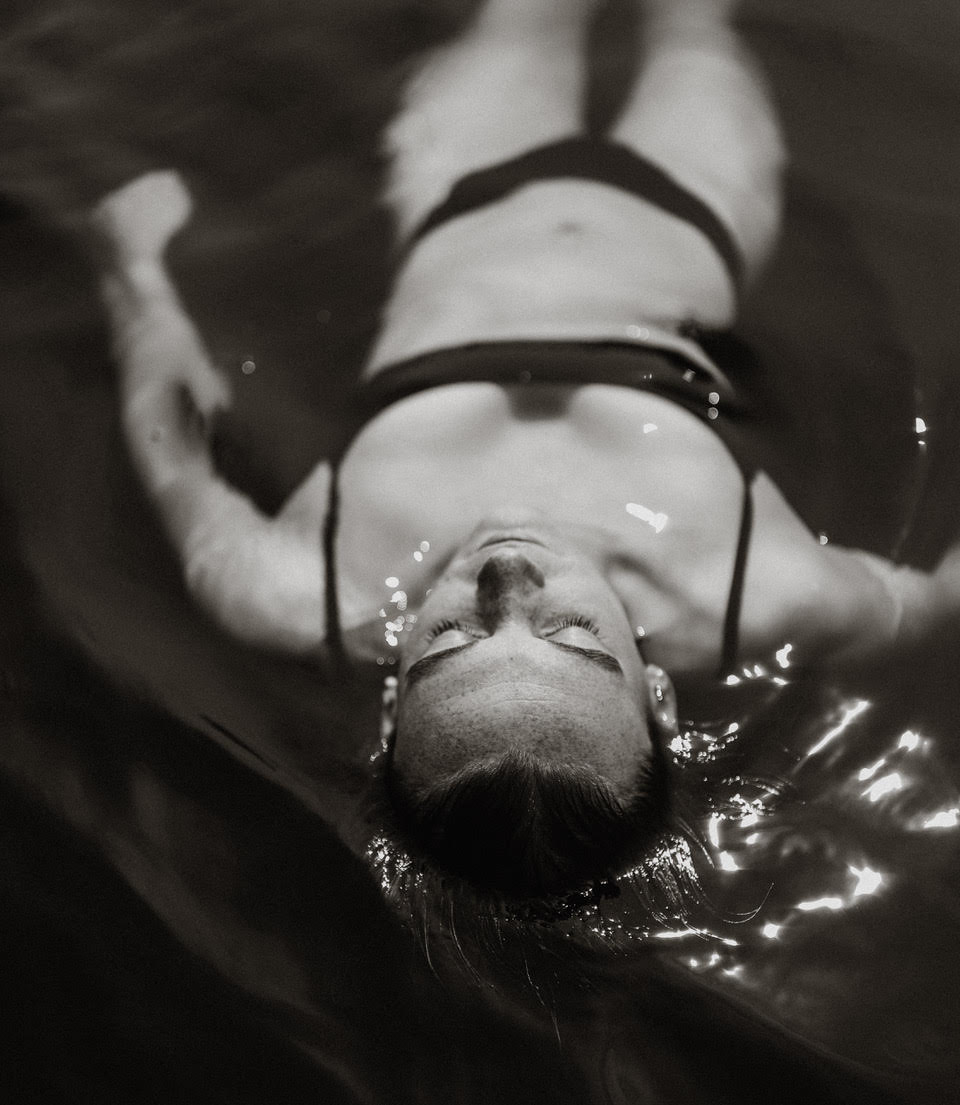
CARINA
CL: You and your brother both sail professionally. Did you always know this was what you wanted to do?
CB: We were both very passionate about sailing at a young age. We grew up in an area with strong racing and access to sailing. We were lucky to have those opportunities that make it possible, and took advantage of them in high school and college, while continuing our education. When I graduated, I had an offer to work on a race boat and I took it.
CB: You obviously had the talent. Do you and Key compete in the same race series? Ever against each other?
CB: We both compete in the GL52 series, but on different boats. And we compete against each other a lot, in fact just last weekend.
CL: Are you competitive with each other?
CB: Yes, but were also supportive of each other.
CL: Key shared with us the different positions on the big boats you race. Every member of the crew has such a specialized and technical job. What is yours?
CB: On a sailing team there is a group of decision makers: the Tactician, Strategist, Driver and Navigator. They determine where were going on the course and how we play boat on boat situations. Then you have the maneuver team, who are executing those decisions, responsible for going around corners and getting the sails up and down. I'm on that team in the pit, so every time a sail goes up or down, the line goes through me.
CL: It looks very physical, like it requires a lot of strength. Do you train off the boat for your job?
CB: Absolutely, we are athletes. It’s on you to put your best foot forward every time you go sailing and it definitely benefits you to be more athletic on the boat. Sailing days are long and you are very active the entire time, so making sure that you are physically able to show up at your best is very important.
CL: You are also very busy with sailing jobs off the boat in between races. Tell us about that.
CB: I work with a small team of 2 other people getting the boat to and from races. When the boat needs to change locations, for say a winter series in Florida or the summer series in Michigan or Rhode Island, we put the boat on a truck. That involves getting the keel off, rig down, and the whole thing packed up on a flatbed. Then it’s on to the next location to do the reverse: build it, put the keel on, rig up, and get the boat in the water. During the series, we take the boat out of the water in between events. Then before it goes back in, we come into the boatyard a few days early to do repairs, cleaning, whatever is necessary for the next race.
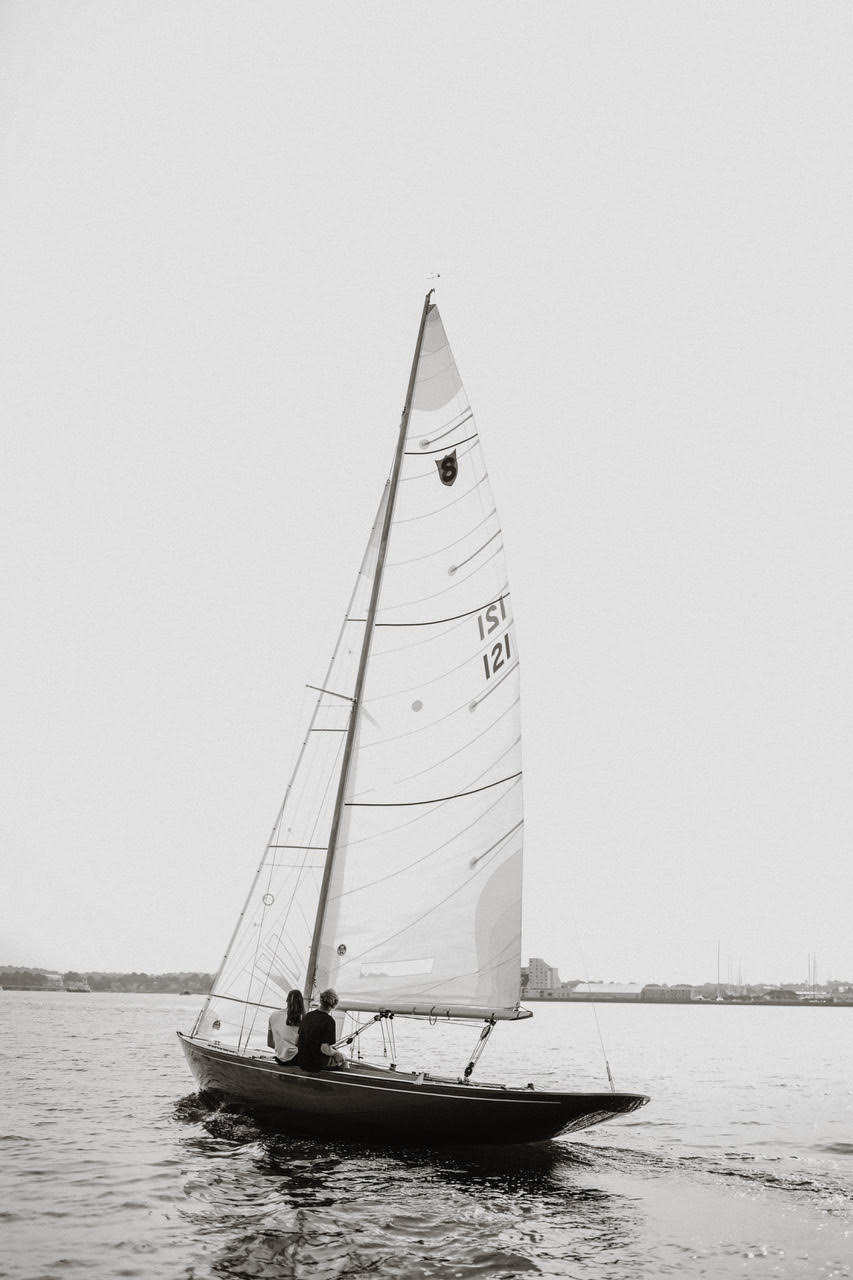
CL: It sounds like you don’t have much down time in between races. Are there things you do to decompress from the intensity of your job?
CB: On a race day, my job can be very intense. I stretch every morning. I don’t have a lot of time but just taking 10 minutes for myself to prepare for the day is really important. Even if I just get to the boat ahead of time to listen to music and get into the right headspace. I’m part of the team that manages dockside, making sure everything is in order, and that we have everything for the day. The job is also very social, so you don’t get a lot of private time, which makes those little snippets within the schedule so precious. Racing days are long, so it’s important that you are showing up to an event at 100%.
CL: And that’s before you even set foot on the boat!
CB: When we dock off, it’s game time so the intensity is there. Mentally, you have to leave everything on the dock and fully be thinking about your role on the boat. The race committee normally aims to get three races in a day. In between there’s not much time so it’s a full team effort to get the sails and boat reset and ready to go. Plus, after sailing, there is cleaning up and making any necessary tweaks to the boat, and then a working team dinner. There is no down time out there.
CL: Like your brother, and many other professional sailors who are part of a big boat crew, you have found this other solo sailing pursuit you enjoy in your downtime that is also restorative. Tell us about yours.
CB: It’s a solo foiling boat called The Moth. The hull itself is very skinny and has these wings that come out that does make it look like a moth. It breaks down into a box and is relatively easy to move so it comes with me a lot of places. It’s great to have a way to get on the water and still have the intensity performance-wise, but it’s in your control. There is less scheduling and prep work compared to the bigger boats so I can just go out by myself when I want.
CL: You’re in the sun. You’re in the wind. Are there things you are doing to protect your skin?
CB: A new page for me is really focusing on the sun and preventing sun damage. I started sailing with a spandex SPF top and leggings underneath our team top and shorts, so I’m fully protected from the sun. It really helps when you come in off the water and don’t feel like you were baking all day. You think more clearly and I’ve seen such a difference in my performance.
CL: Do you have a skin routine for after the day is done?
CB: We are constantly in the elements and also traveling so much that having high quality products is a must. There is no room in my bag for products that aren’t affective. I’ve been loving the Kaya Jungle Body Oil. It’s super hydrating which feels good after a long day in the sun or a long flight.
CL: As young sailors, I know you and your brother have been very involved with helping other young sailors have the same opportunities you have.
CB: It’s a very tightknit community and one introduction or opportunity to sail with a team can open a lot of doors especially for a young sailor. People in the sailing community see that and make a real effort to give opportunities to the next generation. Both Key and I have been the recipients of that, and try to do the same. Whenever we have opportunities to get young people on the water and in these big boats, we go out of our way to do so.
Photos by Maaike Bernstrom